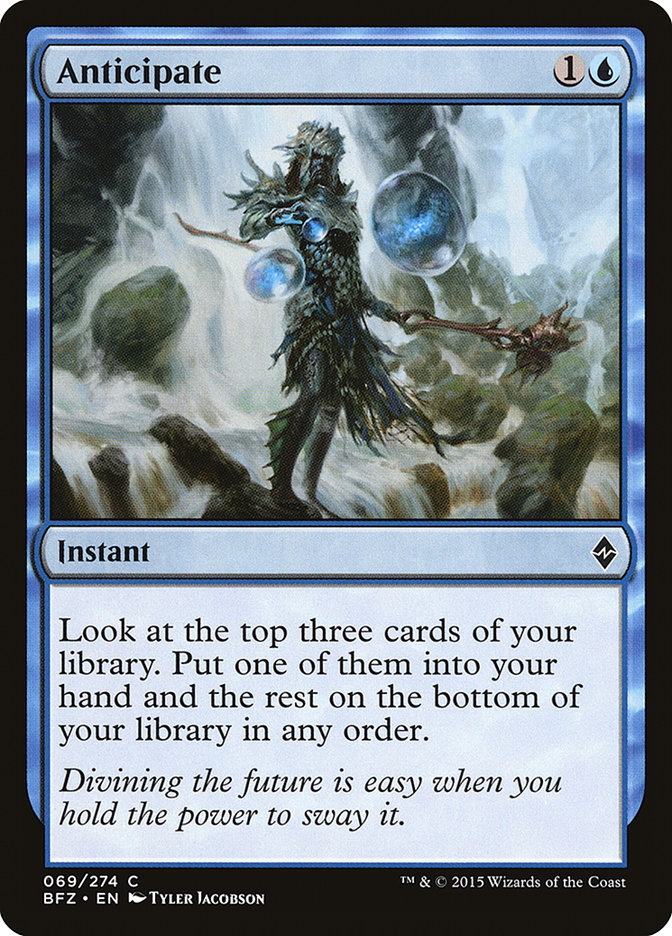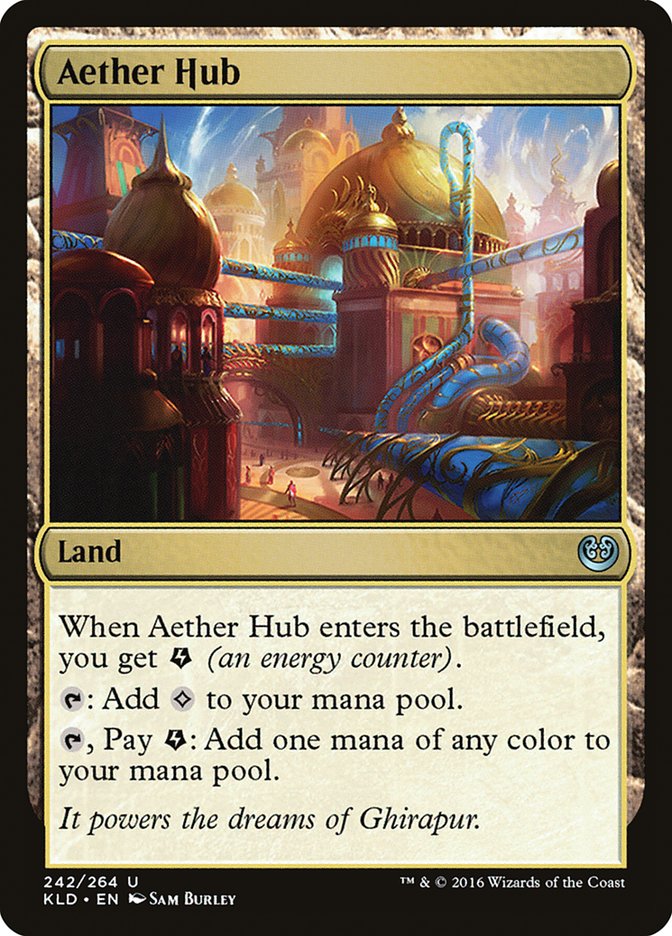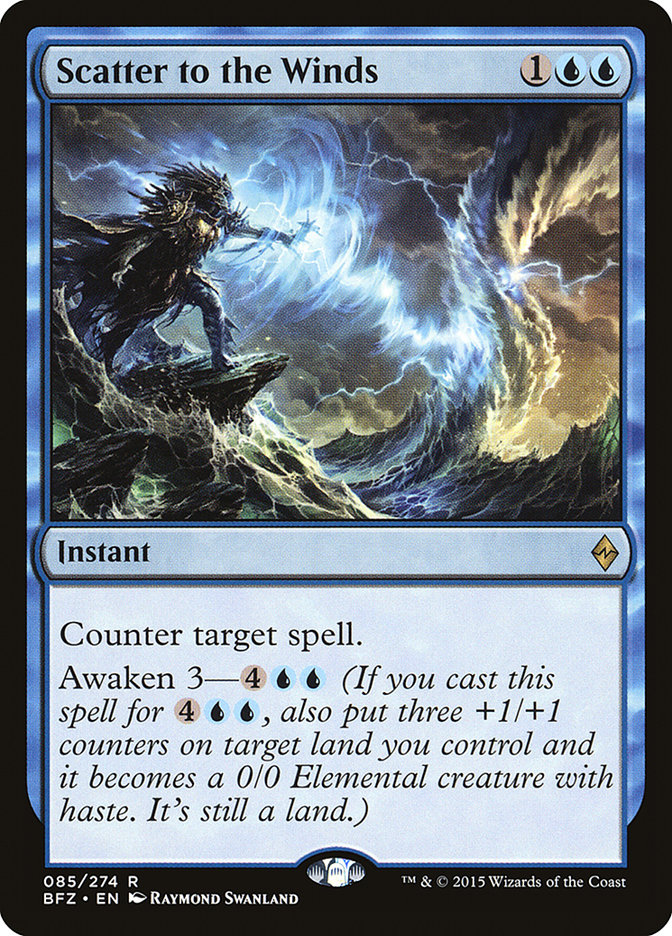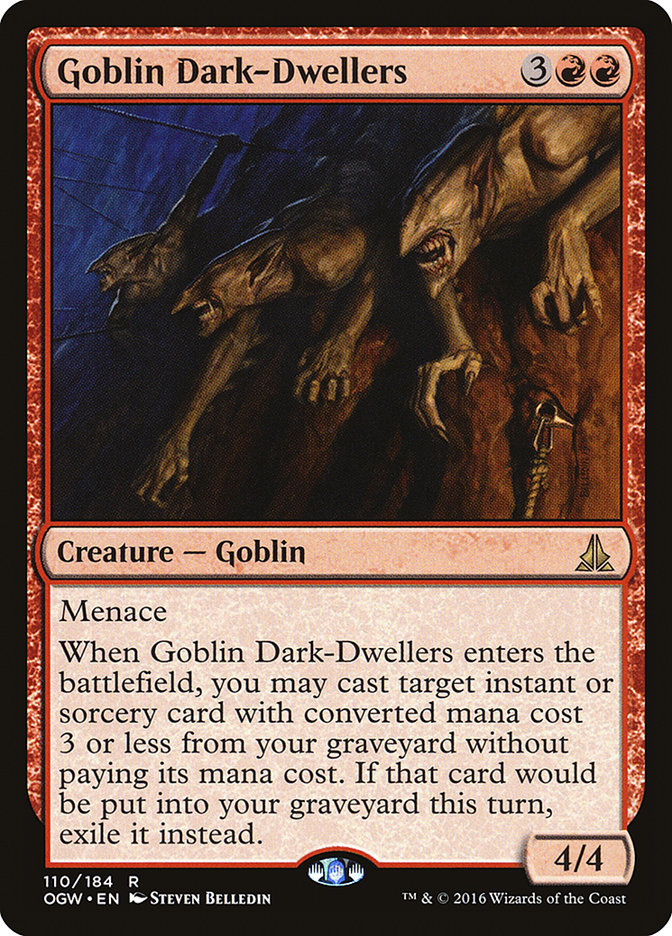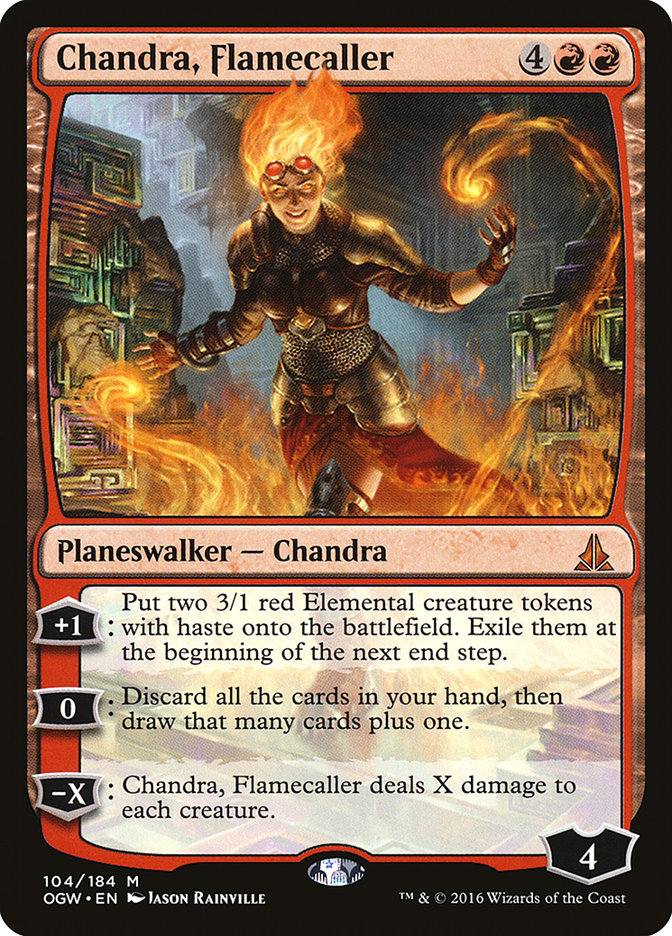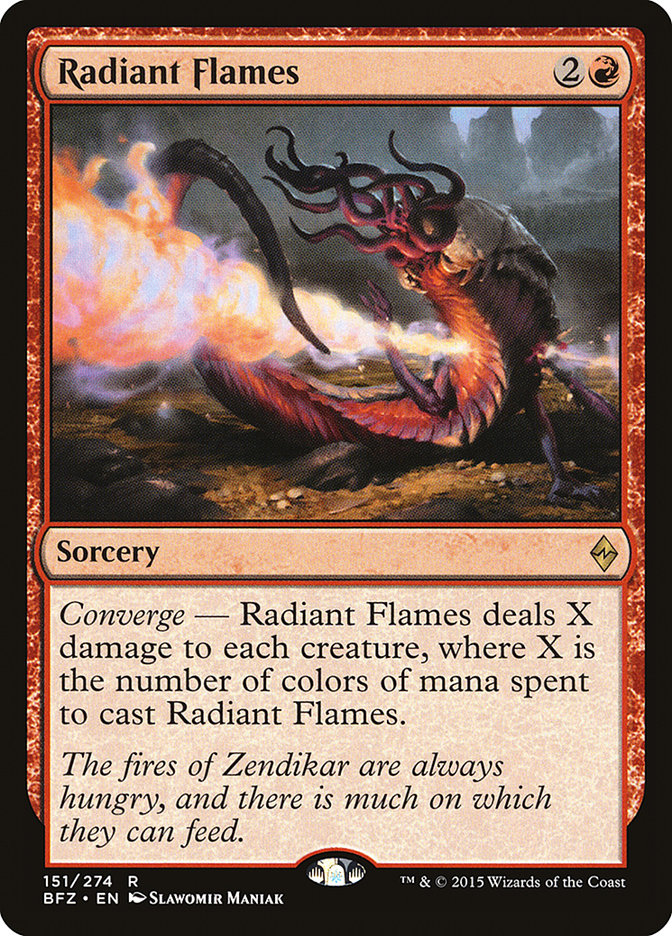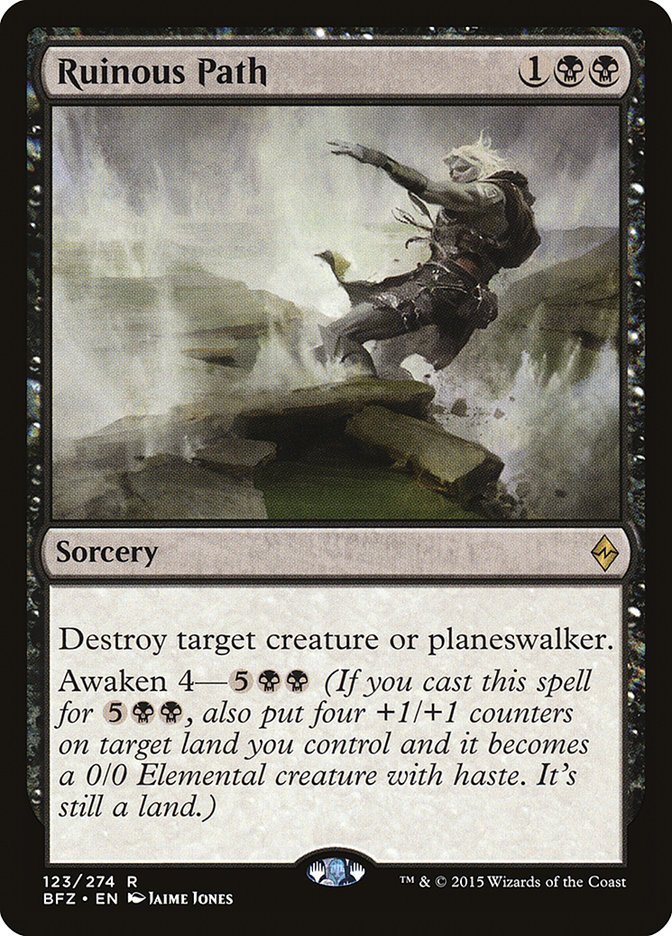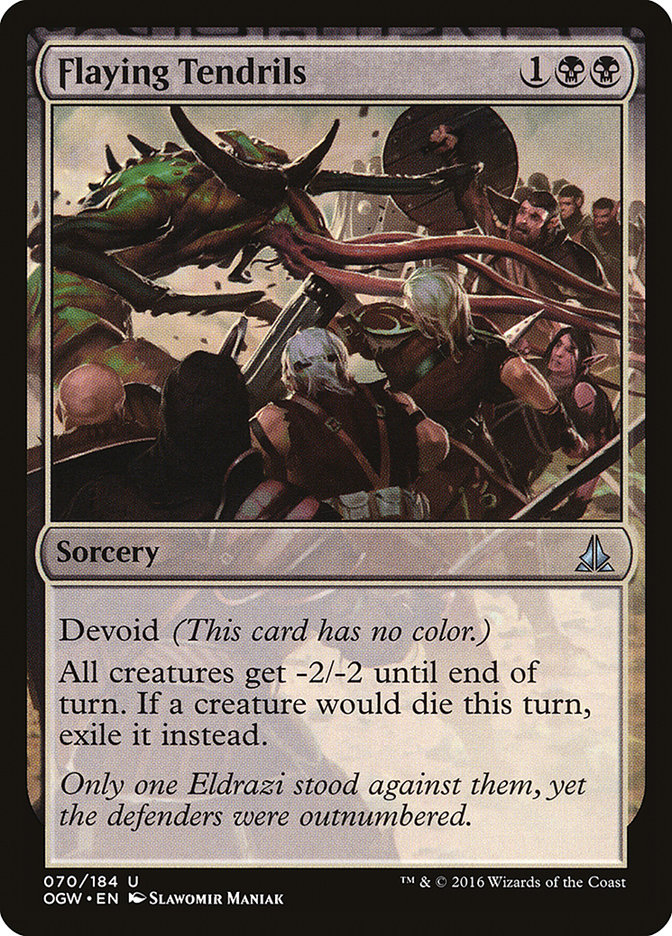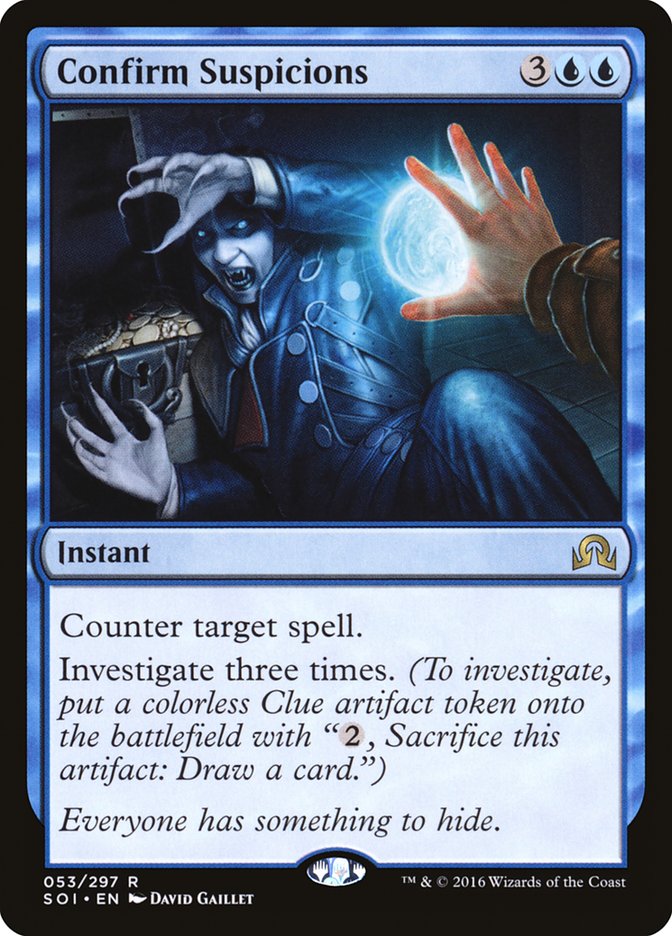I’ve been playing a ton of Standard these last few weeks. Both reasons for my hyper-involvement in the new format are negative sadly. The main driving force for nonstop testing against the top-tier decks is because this format is a bit harder for control to thrive in than expected.
Creatures (6)
Planeswalkers (1)
Lands (26)
Spells (27)

After Pro Tour Kaladesh, I honestly believed that my friends had discovered the secret to defeating the aggressive decks of the format while staying strong against slower decks at the same time. The truth is that these pro players are exceptionally adept at the game and Pro Tours have a low aggro count in comparison to public tournaments.
I have had decent results against the biggest and baddest decks in the format during testing, but the wins are very draw-dependent. In the last few articles I’ve written about the new Standard format, I pointed out a glaring issue with hitting land drops consistently while playing control. I find myself keeping two- or three-land hands with my fingers crossed, hoping to get there. This strategy has given me mixed results and continues to push me toward a blue-based control deck over the Mardu and B/R Control decks I have been jamming games with recently.
Blue offers Anticipate, which isn’t the most exciting method to hit land drops in the history of Standard cantrips. The overall power level of blue is so bad that the decision to go that route really involves a risky commitment to the weakest color in Standard. There are some players that have suggested that blue is the splash color, but requiring blue on turn 2 for Anticipate involves having eleven or so sources. Even if we were able to get away with fewer blue sources to splash single blue cards, what other spells are there? Counterspells that are single-color are very risky to lean on.
Spell Shrivel is probably our best bet but is quite embarrassing in the late-game for a true control deck. W/U Flash and other tempo-style decks can get away with these types of medium disruption spells, but it can be devastating for us more often than not. This puts control deckbuilders on the manabase tightrope, which I think I may have solved with the control deck I am presenting today. I didn’t want to do a full write up on Mardu Control, because Ross Merriam took care of that here in his Daily Digest for the 5-0 run I had on MTGO.
Creatures (6)
Planeswalkers (5)
Lands (26)
Spells (23)

The second reason for my game count nearing triple digits in the new Standard is I had some unfortunate luck in my most recent job venture. As many of you know I was a public school teacher for ten years in Norfolk, VA. I decided to chase a job opportunity, take a risk, as an Instructional Coach for a charter school up in Washington D.C. They ended up having financial troubles and as a result I was laid off, which provided me a good eight days of nonstop MTGO playing. The reason I told this story was not to get anyone reading down in the dumps for me, but to relay the good news that I will be returning to the Hampton Roads area with an even better teaching gig!
Life can be bumpy sometimes, my friends, but this game, along with good friends, presents consistency that we all need in some form or fashion.
Anyway, I wish I could claim that this Grixis Control deck posted above is a masterpiece as a result of the time and effort I have put into it these last few days, but the format is not an easy one to conquer by any stretch of the imagination. It felt like just yesterday when I was casting Dark Petition with rebound and none of my opponents had a chance to win. Now we have to center our strategy as blue mages around Torrential Gearhulk, which is easily the most powerful control card in the Standard.
Manabase
The manabase is the trickiest thing to perfect in this Standard when trying to tap into double-colored spells from each contributor. I didn’t think such a thing was possible after the Theros Temples rotated, but Aether Hub has proved me wrong. Aether Hub is an easy four-of in a deck that can provide energy that isn’t utilized outside of mana fixing. The double-colored pressure on the deck really rests in U/B, which is the shell of Grixis Control. When playing a blue control deck, there isn’t really a way around requiring UU early in order to cast the more powerful countermagic.
Void Shatter and Scatter to the Winds are split in this deck to solve the growing B/G Delirium problem. Luckily for control players, those midrange decks are pretty all-in on Emrakul, the Promised End in order to take us down. That is why you’ll notice the copies of Transgress the Mind and Summary Dismissal in order to give us a bit of insurance in case that situation rises.
The double black is the biggest strain on the manabase, but arguably the most important. I simply wasn’t defeating W/U Flash on a consistent basis without Liliana, the Last Hope by my side. She was the piece missing that put the matchup above 50% for me. Liliana, the Last Hope is a guaranteed threat on the play against W/U Flash and gives the added bonus of sniping a Selfless Spirit upon arrival. Games where that sequence unfolds have resulted in pretty easy victories.
Similar scenarios exist against other aggressive decks that deploy low-toughness Zombies, various R/W threats and Thopters, or even decks that have a moderate amount of early pressure. The true weakness that Liliana, the Last Hope has is the sorcery-speed aspect. This build of Grixis Control is very light on the sorceries; however, some are desperately needed. The inclusion of Ruinous Path is mandatory and I have jokingly mentioned to friends that I can link every loss to a Gideon, Ally of Zendikar that I was unable to answer. I wish that joke had no validity to it, but it is way closer to reality than I had hoped.
The double-black price tag of Ruinous Path and Liliana, the Last Hope has forced my hand on the inclusion of Grasp of Darkness to support Harnessed Lightning. That combination is very strong, removing Smuggler’s Copter or other devastating threats in the early-game with ease. This black-based control deck also gives us Kalitas, Traitor of Ghet, which is another mandatory element to our aggro-beating formula. I had the Vampire lord in the maindeck, but it didn’t have the battlefield impact that the other creatures had.
This leads us to the third color in this maniacal control strategy. Red at first was a light splash, allowing better two-mana removal spells, an easier-to-cast Murder, and some sweet creature-lands. It turns out the logic for Anticipate applies to Harnessed Lightning as well. The red splash does us no good if it arrives on turn 4 or 5.
For this reason, we have to crank up the number of sources, which came out to twelve originally. I found myself easily hitting two red sources in the late-game and that Chandra, Flamecaller would be a perfect addition to clear up the riffraff that was left on the battlefield. All of that unused energy gave Aether Hub a pain-free City of Brass feel to it, which is any multicolor control player’s dream. I tested the manabase, added in Foreboding Ruins, cut a Wandering Fumarole, and found myself having thirteen red sources. With thirteen red sources and seven card draw spells, I took the risk of adding Torrential Gearhulks five and six to the deck.
Goblin Dark-Dwellers has proven to be better in this deck than in the Mardu Control deck that was advertised at the beginning of the article. Having four Anticipate nearly guarantees that the overpriced Snapcaster Mage will yield some card advantage. There are games where having double red on turn 5 is tricky, but this deck is more patient than most. There are eight expensive spells (which is an improvement for me) that don’t need to be cast in a hurry due to the ability for the cheaper spells to keep a clean battlefield.
Chandra, Flamecaller is the most controversial strain on the mana curve for sure; however, having a late-game win condition, card draw spell, and/or sweeper at your disposal is nothing to shake a stick at. For those safer mages out there, I would completely understand a decision to remove those for some cheaper alternatives in the maindeck. I for one am a huge fan of going big in my control decks, so expect to see me rocking my haymakers at the upcoming Invitational when the SCG Tour stops by Atlanta in December.
I know that the manabase seems suspect at best at first glance. I will admit that I found the amount of potential enters-the-battlefield-tapped lands to be a bit daunting. The six lands that require us to have one of our nine Swamps in-hand have “gamble” written all over them. Yet the mana works out a lot better than it looks on paper. With four Spirebluff Canal, four Aether Hub, five Swamp, and the potential of one of the Shadow lands entering untapped, there are enough ways to give us two mana to use as we see fit on turn 2. The rest of the lands eventually cooperate and I have had more games with smooth land entry than those without. If the goal is to play three solid colors in this format, we have to get creative to reach it.
The Sideboard
The usual suspects in control decks come with every deck I present. Negate is the most powerful disruption spell out of the sideboard and takes care of a host of problematic spells. The third and four Ruinous Path are also required to stop the main cause for loss, an unchecked Gideon, Ally of Zendikar.
With the creation of Smuggler’s Copter, Gideon, Ally of Zendikar leaves a trail of destruction prior to it being removed. With this being said, a Ruinous Path doesn’t always guarantee victory afterward, but it is our best shot when the countermagic isn’t there to save us.
The third Transgress the Mind offers more defense against Gideon, Ally of Zendikar from the W/U Flash angle, as well as any midrange/control deck you may face off against. Transgress the Mind works perfectly with Goblin Dark-Dwellers and is a nice surprise out of left field. Most opponents will put you on Torrential Gearhulk and believe they are safe on the fifth turn, which gives Goblin Dark-Dwellers even more value. The sideboard helps lower the curve against aggressive decks and provides four early sweepers with the Kalitas, Traitor of Ghet immediately after. I have made the big mistake of holding removal prior to deploying the Vampire; more removal will come, but your life total may not survive the ride. I now tend to lean toward the side of caution and cast spells on-curve when applicable.
The reason I have one Flaying Tendrils instead of the fourth Radiant Flames is for the awesome exile effect. Radiant Flames can do a similar task with Kalitas, Traitor of Ghet, but sometimes you just need to remove pesky creatures that return from the graveyard in a hurry. Flaying Tendrils was a two-of in the sideboard, but the graveyard-based aggressive decks have dwindled in popularity as the R/W and Mardu Vehicles decks have risen. This is an easy 2/2 split if you have more Haunted Dead in your neck of the woods.
As far as the Confirm Suspicions, I can’t really defend it besides saying I love the spell. When I play four Torrential Gearhulk in my deck, with Liliana, the Last Hope retrieving them from the dead, I plan on “getting” my opponent. A four-for-one swing is just too attractive to avoid, so expect one of these to be sleeved up as part of the fifteen. Matthias Hunt and Cedric Phillips always joke around about me playing these types of cards, like Notion Thief or Shadow of Doubt, and they are absolutely right. At the end of the day I want to win, but in Round 6, Game 3, if I can yell “I knew it!” and toss Confirm Suspicions on the table…that is jackpot, my friends!


